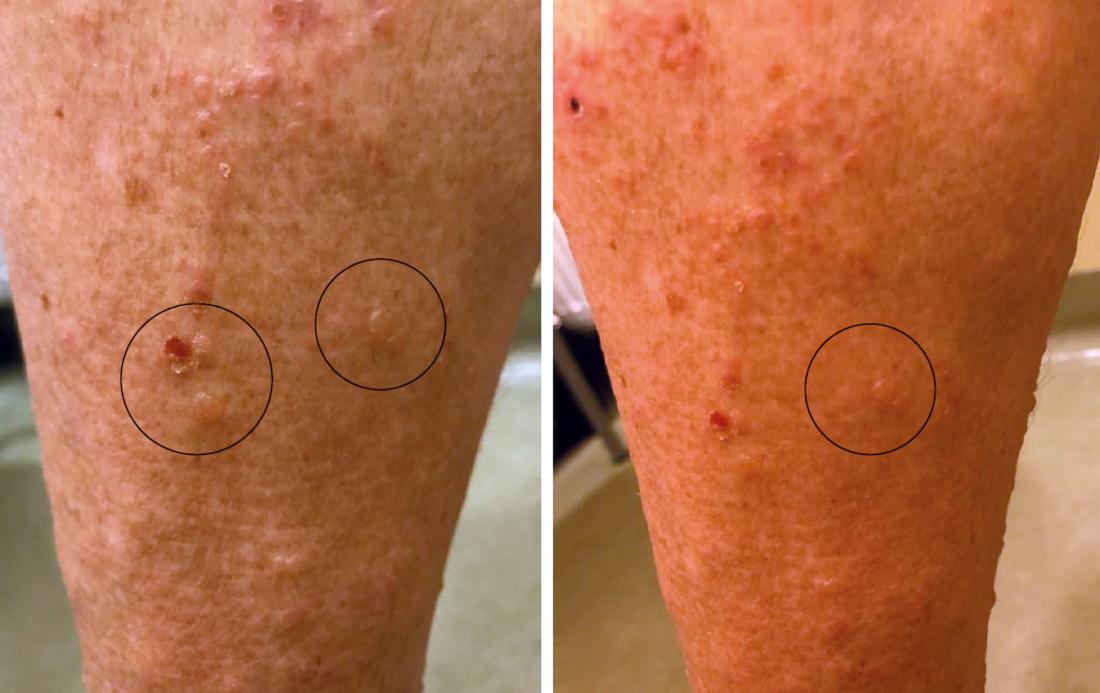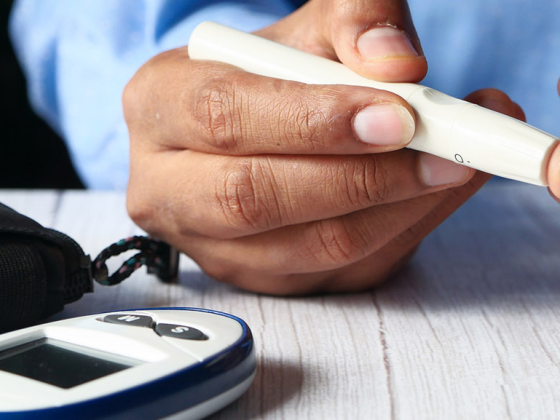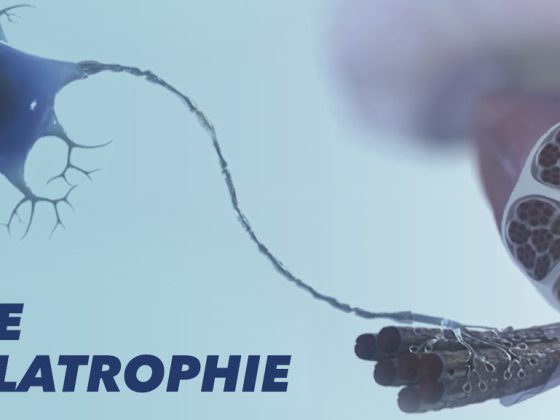An elderly patient with therapy-resistant exanthematous skin lesions was diagnosed with bullous pemphigoid on the basis of ELISA IgG antibody determination. Serological detection of BP180 has high diagnostic sensitivity and specificity. After inpatient systemic cortisone therapy, the patient was discharged to an outpatient setting.
Bullous pemphigoid occurs more frequently in older persons. Typical clinical manifestations include severe itching and bulging blisters, erosions and crusts. Mostly, only the skin is affected, mucosal involvement is rather rare [1]. Immunopathologically, IgG antibodies are directed against components of the epithelial basement membrane (BP 180 and 230 antigens). In direct immunofluorescence, linear deposition of IgG and/or C3 along the basement membrane is characteristic.
Medical history
This case involves a 69-year-old woman who has been suffering from therapy-resistant exanthema with a relapsing course for seven months. A massive deterioration has been observed for two weeks. Allergies are not known. Pre-existing conditions: Type 2 diabetes mellitus, arterial hypertension, adrenal adenoma. History of varicose vein surgery and hemithyroidectomy. Drug history: Jentadueto
®
, Exforge
®
, Diovan
®
, Trajenta
®
, Xyzal
®
. Rosuvastatin, Deflamate, Thyrex.
Clinic and pretherapies
Generalized exanthema, partly small papular, truncal. In the area of the lower and upper extremities bullae and vesiculae. Mucous membranes bland. No scaling, no mite detection. Darier sign negative. Itching that is more pronounced in the evening.
Pretherapies consisted of corticosteroid-containing topical preparations and antihistamines.
Suspected diagnosis and further procedure
The tentative diagnosis is autoimmune bullous dermatosis (bullous pemphigoid). DD Urticaria, M. Grover. The patient is admitted as an inpatient for further diagnostic clarification. Specimen excision for histology and direct immunofluorescence. Anti-BP180 IgG ELISA. Routi-ne laboratory: eosinophil granulocytes 0.69 (0.0-0.4 G/L); eosinophil granulocytes relative 8.3 (1-4%).
Immunoserological examination findings
ELISA IgG antibody determination revealed the following:
- BP180: 3.18 / BP230: 0.06 / DSG1: 0.22 / DSG3: 0.34 / Envoplakin: 0.40 / Collagen VII: 0.39
(valid default range: neg < 1 > positive)
Photos: © Hietzing Clinic (A)
Diagnosis
Bullous pemphigoid. Serological detection of BP180 has a sensitivity of 89.8% and a specificity of 97.8% [2].
Therapy
Inpatient setting
- Systemic cortisone therapy: methylprednisolone i.v. 60 mg/d at 90 kg bw (initial dose).
- Due to blood glucose imbalance, reduction to methylprednisolone 10 mg/d
- Doxycycline i.v. initiated, continued by o.s.
- Histakut i.v.
- Local Dermovate
®
ointment 2×/d, Xyzal
®
if needed 1-2 ×/d
Outpatient setting
- Continuing care with a specialist in private practice
- Methylprednisolone 10 mg per os for further
- 10 days, pantoprazole (as long as methylprednisolone therapy), vibramycin
®
100 mg 1×/d, Xyzal
®
1-2×/d if needed.
Contact:
Doz. Dr. Paul-Gunther Sator, M.Sc
1st Senior Physician of the Skin Department, Hietzing Clinic
Wolkersbergenstrasse 1, A-1130 Vienna
paul.sator(a)gesundheitsverbund.at
Literature:
- AWMF: S2k guideline. Diagnosis and Therapy of Pemphigus vulgaris/foliaceus and Bullous Pemphigoid, 2019, www.awmf.org (last accessed Feb 05, 2021).
- EURIMMUN: Bullous Autoimmune Dermatoses, www.euroimmun.com/documents (last accessed Feb. 05, 2021).
DERMATOLOGY PRACTICE 2021; 31(1): 17












